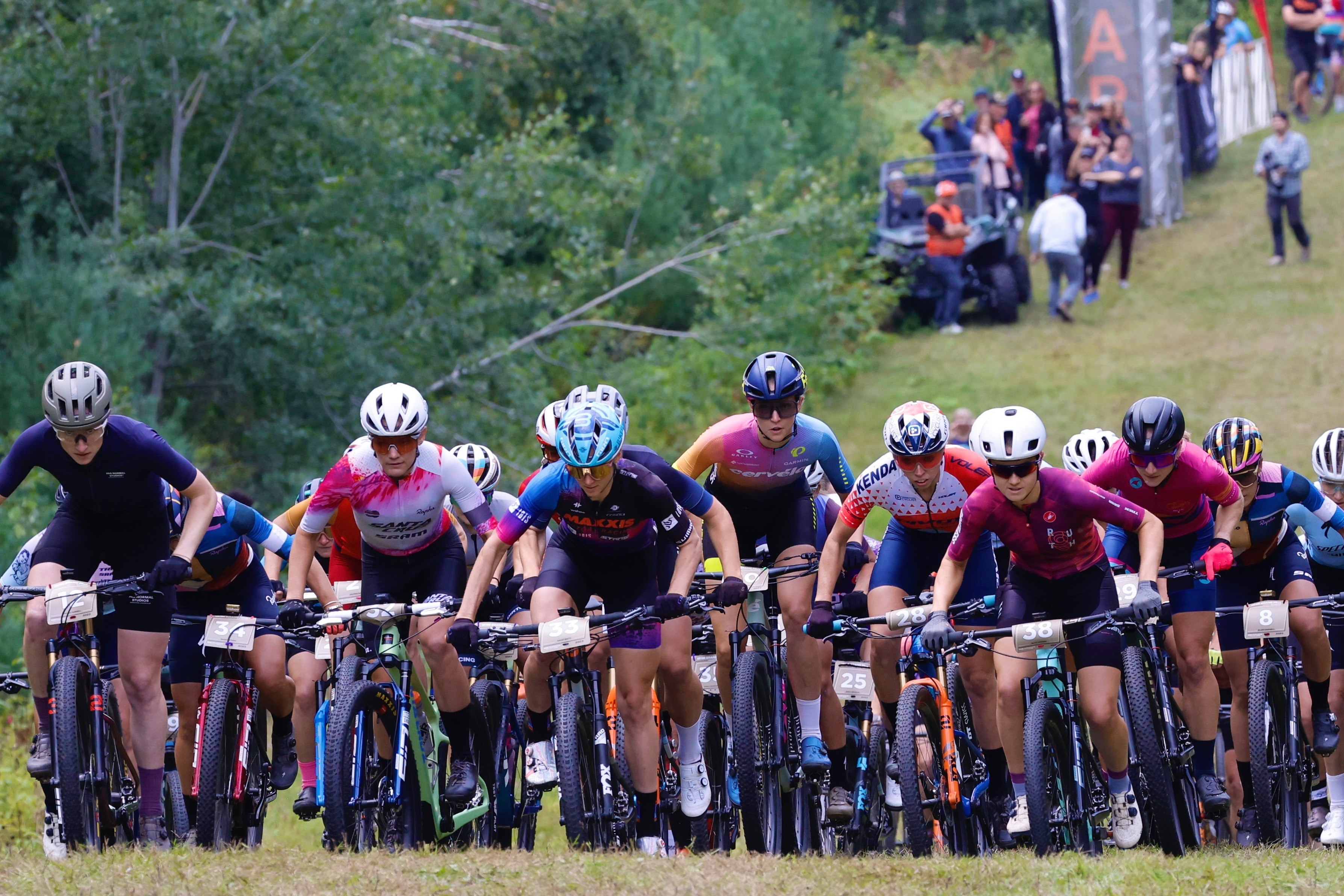
The Life Time Grand Prix off-road series begins anew for a third season this Friday at Fuego XL 100k, and organizers will introduce rules and points modifications which will be standardized across all seven events.
Adjustments in mass starts and an alteration in the points system are the two most significant changes for the series, the opening round on display in Monterey, California, for the endurance cross-country mountain bike race at Life Time Sea Otter Classic.
Life Time owns and operates the US-based Life Time Grand Prix series as well as the seven MTB and gravel events assembled for a season-ending cash purse of $300,000, paid to the top 10 elite men and elite women comprised of their invitation-only field of 60 riders. Life Time’s Michelle Duffy, the senior marketing director for events and retail marketing, told Cyclingnews that athletes were part of the decision process on which changes should be implemented for 2024, and which ones needed more time to germinate.
“As we’re entering year three, we’ve definitely figured out some of the things we wanted to change. And that is reflected in some of our new rule changes, points adjustments, etcetera. And then we’ve also figured out what we want to keep consistent, which includes the schedule of events, for example,” Duffy said in an interview with Cyclingnews.
“For scoring, we’ve moved to a model where if you podium, you’re basically bonused in points. Last year, there were some inconsistencies, some events were top three and some events were five for the podium, so this year, a podium will be top five,” she said. First through fifth will be separated by two-point spreads, while sixth through 30th will score on a sliding one-point scale.
“If you are the top finisher at an event like Unbound Gravel or Leadville, you should be rewarded for that. And then secondly, let’s get the dynamics going a little bit towards the end of the racing there, knowing that there are more points on the line.”
The adjustment in time gaps for all pro-division at the start is a big change, for which the elite women had promoted to give them their own race and not lead to the mixing of amateur riders starting minutes behind them.
The latest race content, interviews, features, reviews and expert buying guides, direct to your inbox!
“For all of our events, the elite men and women will have separate starts. We started to move in that direction towards the end of the year. An event like Leadville, where we’ve never seen anything like that, is a bigger change. And then, we’ve adjusted the time gaps to make sure that the men and women have more cushion. For the women, [it’s] more cushion between their start time and the amateur men.”
The selection process for the 60 spots in the field takes place each fall. New for this year, any top 15 finishers in the 2023 series who reapplied were extended an invite to return in 2024. The criteria for selection in the invitation-only field, otherwise, considered off-the-bike activities such as storytelling and fan engagement to help grow the sport of cycling.
Duffy said the biggest ‘value propositions’ for this year, which Life Time is delivering to its elite field, include rider resources to help them with personal branding as well as the overall approach to content.
“So an example of that, we just came off of three training sessions that we provided to the Life Time Grand Prix athletes. The first was around USADA drug testing protocols, the opportunity to ask USADA about their policies. The second was media training. And the third was social media training, so how to develop a brand for yourself,” she explained about new resources.
“I think we have a duty as the producer of this series, in a format that’s new to the US and many of these athletes, to help them figure out how to optimize what they’re enduring all year.”
In addition to a competitive field, Duffy said Life Time was looking to move to create a “fandom” for the sport with more real-time storytelling. While live streaming is still a challenge for the remote locations which host most of the races, she said that element was still being considered, but not a slam dunk. Live broadcasts were attempted at the first three events of the 2022 Grand Prix but were later discontinued due to a lack of resources.
“Trying to livestream in year one was aggressive. Our focus for this year is not going down the live stream rabbit hole just yet, mostly because if it failed, then we didn’t deliver a good experience. But instead, growing the model that we tested at Leadville and then Big Sugar, which is a ‘Life broadcast’, race highlights video that comes out 24 to 48 hours following the race,” she explained.
“One of our goals is to create more Fandom of the sport. It’s a disservice to the series, in the work that we’re doing and the athletes that are dedicating their season with us, to not be telling those stories as they’re happening in real time. So we’re shifting our content format to be more in the moment.”
Last year Life Time experimented with short live broadcasts on social channels, including the final 15 miles of The Rad Dirt Fest in Colorado and the first 20 miles at Big Sugar in Arkansas. It is a work in progress, and Duffy stressed that the company wanted to keep producing content with ‘no barrier of entry’, or keeping the cost to watch free, which in turn helps add value to the Life Time brand and inspire all levels of riders.
The rule to eliminate bar extensions for pro riders last year will remain in place. Also continuing for a second season will be random doping controls for the pro riders at all events.

